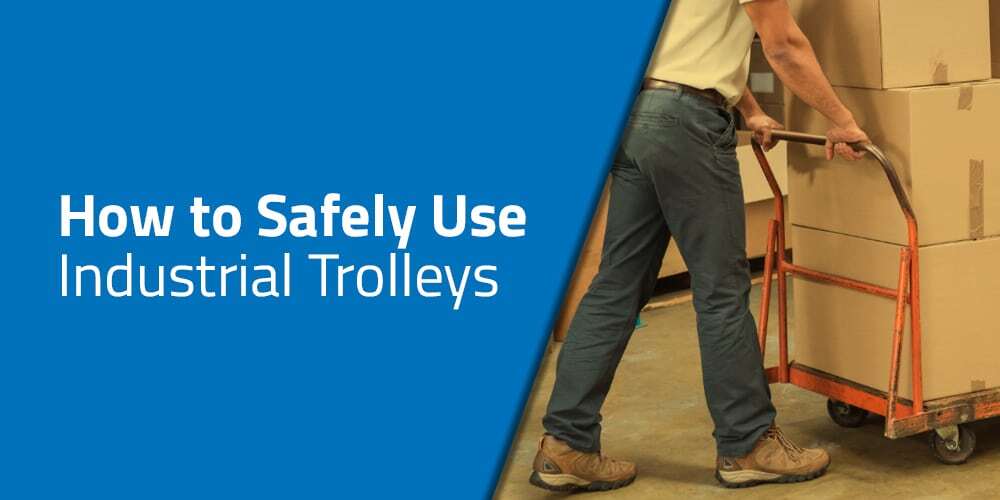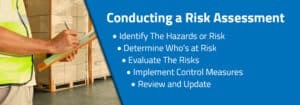Knowledge Centre

As a warehouse manager, ensuring the safe use of industrial trolleys is vital to maintain a cohesive, secure, and efficient workplace for your employees. Working in a warehouse can be strenuous, and the manual labour required can be difficult on the body. Safely using industrial trolleys significantly reduces the load on employees and minimises the risk of accidents or injury. Moreover, a good industrial trolley is proven to increase productivity, improve inventory management, and create a safer working environment for everyone. Sitecraft have developed the ultimate guide to safely using industrial trolleys for your business. We will help you to understand everything you need to know regarding trolley safety, including risk assessments, choosing the right trolley for your business, training your staff to safely use a trolley, and how to maintain your equipment properly. Let’s delve in:

If you’re looking to ensure your warehouse employees’ safety, performing regular risk assessments is always the first step. A thorough risk assessment allows you to identify potential hazards on the premises and then implement control measures to minimise employee risk. The risk assessment is designed to identify any hazards that might cause injury, determine if the trolleys available to staff are adequate for the task at hand, and then implement corrective strategies to eradicate any risks. When conducting a warehouse risk assessment, you should:
Identify the hazards or risk – Asses the warehouse and working conditions for any potential hazards relating to industrial trolleys. You are looking for uneven surfaces or the eventuality of collisions or overloading from staff.
Determine who’s at risk – Next, you need to understand which employees are susceptible to the hazard and how it could harm them so that you can protect them.
Evaluate the risks – Each hazard will have differing severity in terms of the risk to your employees. Consider the likelihood of each hazard happening, the potential consequences, and the work needed to counteract the danger. Evaluation will help you to prioritise which task to tackle and which control measures to implement.
Implement control measures – Based on your risk assessment and evaluation, develop strategies to reduce the risks identified. Control measures include equipment upgrades, re-flooring, inventory management, training, traffic management plans, or simply establishing safer operating procedures within the warehouse.
Review and update – Just because you have conducted a risk assessment, and implemented control strategies, does not mean your job is over. You need to regularly review your risk assessment and conduct further checks to ensure your control methods remain effective.

Proper technique is vital to manoeuvre and operate an industrial trolley while also minimising the risks of injury. The best practices below will help warehouse employees to ensure their own safety and the safety of their colleagues:
Loading and unloading the Trolley – Always evenly distribute the weight on the trolley and secure the goods before moving them. Overloading will lead to instability and significantly increases the chance of accidents. Take note of the trolley’s maximum load capacity and never exceed this.
Use both hands – It might sound basic, but it is crucial always to maintain control of the trolley with both hands. This is particularly important when moving heavier loads or navigating tight spaces.
Push, don’t pull – This is manual handling 101. Pushing the trolley reduces the strain on your back and allows you to utilise your body weight to move the weight more efficiently. Pulling the trolley is also more dangerous and leaves you more sceptical of accident or injury.
Ensure a clear line of sight – To avoid collisions with colleagues or other obstacles, always ensure you have an unobstructed view and a clear path ahead of you.
Maintain a steady pace – It is essential to move the trolley at a steady pace and avoid any sudden movements. A sudden shift or jolt of acceleration can lead to instability, an accident, or injury.
Be cautious of ramps, sloped ground, and uneven surfaces – Always assess the area before moving through and avoid any uneven surfaces that are not ready for a trolley to move through. Ramps and slopes increase the risk of tipping or losing control of the trolley, so always take extra care when navigating them, and seek assistance if necessary.
There is no such thing as one size fits all regarding industrial trolleys. Therefore, choosing the right trolley for your warehouse and specific requirements is vital. Selecting the most suitable trolley will ensure the safety of your employees while also improving efficiency and productivity.
Here is a list of the best trolleys and a brief description of each:
Platform Trolleys – With a flat, sturdy base, platform trolleys are ideal for transporting heavy or bulky items.
Cage Trolleys – With a metal frame and enclosed perimeter, cage trolleys are perfect for transporting a large quantity of smaller items.
Shelf Trolleys – With multiple shelves, these trolleys are fantastic for organisation within your warehouse or retail store and for transporting items regularly.
To maintain a safe working environment, training staff to safely use industrial trolleys is vital. Comprehensive manual handling training will empower staff to operate equipment safely and efficiently. The critical training components for any warehouse employee include:
Risk awareness – It is crucial to educate staff about the potential risks and dangers associated with using industrial trolleys to avoid accidents and adhere to the relevant safety procedures.
Safe operation – Teach your employees the techniques for safely managing industrial trolleys detailed above and emphasise the importance of these best practices for their own safety and the safety of their colleagues.
Maintenance and inspections – Regular inspections and essential maintenance is everyone’s responsibility. Ensure that employees frequently monitor the state of their equipment and understand the importance of keeping trolleys in good condition.
First aid and emergency response – While we can significantly minimise risk through proper safety protocols and training, accidents can happen. Ensure your employees are trained to deal with emergencies involving trolleys, such as collisions, spills, or injuries.
At Sitecraft, we are passionate about employee wellbeing, proper manual handling, and the safety of warehouse workers. So, we’ve provided a list of simple and practical tips that you can implement in your business to maximise safety and productivity when using industrial trolleys:
Clear pathways – Ensure the floor is clear and all pathways are free from obstacles, loose packages, or debris. A clear path will prevent accidents or collisions and improve efficiency within the warehouse.
Clear Signage – Use directional and informational signage to raise awareness about safety protocols and identify critical areas where industrial trolleys can and can’t be used.
Traffic management plan – Create a simple traffic management plan to minimise congestion and reduce the risk of collision or accidents involving staff, trolleys, and other equipment.
Organise storage – Keep your industrial trolleys and any other goods or materials organised to minimise the risk of accidents and improve overall inventory management.
It is only possible for employees to safely use industrial trolleys if the equipment itself is in prime condition. Therefore, regular inspections and maintenance work is essential to ensure employees’ safety and prolong your equipment’s lifespan.
By conducting regular maintenance checks and sticking to an inspection schedule, you can address potential issues before they become more significant problems, reduce the number of warehouse accidents, and ensure the safety of your staff. Here are the main elements involved in trolley inspections and maintenance:
Visual inspections – The first step is to regularly check all trolleys and equipment for signs of wear and tear, such as bent frames, damaged wheels, or loose bolts.
Functional testing – After this, test the functionality of your industrial trolley to ensure the brakes, wheels, and any other elements are functioning correctly.
Cleaning – Keeping trolleys clean from grease, dirt, or debris will prevent interference with performance or any other possible safety hazards.
Repairs and replacements – When you do identify issues, address them immediately. To maintain safe operations, promptly replace or repair the damaged trolley.
Ensuring your staff know how to use industrial trolleys safely is a simple and vital practice within every warehouse. Conducting regular risk assessments in your warehouse, monitoring the condition of your industrial trolleys, teaching staff manual handling techniques, and implementing some supplementary measures such as signage will ensure the safety of employees, minimise the risk of accidents, and boost within your warehouse.
At Sitecraft, we proudly supply multiple major retailers, manufacturers, and logistic suppliers in Australia with our extensive range of heavy duty trolleys and hand trucks. If you’re in Victoria, New South Wales, or Southern Australia, and you’re looking to replace, repair, or upgrade your warehouse equipment, contact our team, and we can take it from there.